A personal review of 10 years with my 2003 Gibson Les Paul Studio Guitar.
The Perfect Electric Guitar?
In this review, I won’t repeat what’s already been said about the Gibson Les Paul Studio. It’s already been covered both in my own articles (Why the Gibson Les Paul Is Better Than the Fender Stratocaster and Why the Fender Stratocaster is better than the Gibson Les Paul) and in the wealth of information readily available on the web. This is a warts and all account of the time I spent with the best guitar I ever owned, from proudly buying it online new (£799 from Merchant City Music, Glasgow) to eventually offloading it 10 years later for £600.
Is the Gibson Les Paul Studio gig ready off the shelf?
I wouldn’t recommend it. For some reason, my 2003 Gibson Les Paul Studio shipped with bridge saddles like knife edges, ripping through my wound strings almost immediately. I didn’t want to touch anything so I let the strings break the saddles in naturally, which took maybe 4 weeks of solid gigging. My backup guitar at the time, a 2004 Epiphone Les Paul Standard (I’ll refer to this many times in this article for comparison) didn’t have this problem, at less than half the price.
Another issue to look out for is the thickness and finish of the neck, which is a chunky 50s style with a sticky nitro. Be wary.
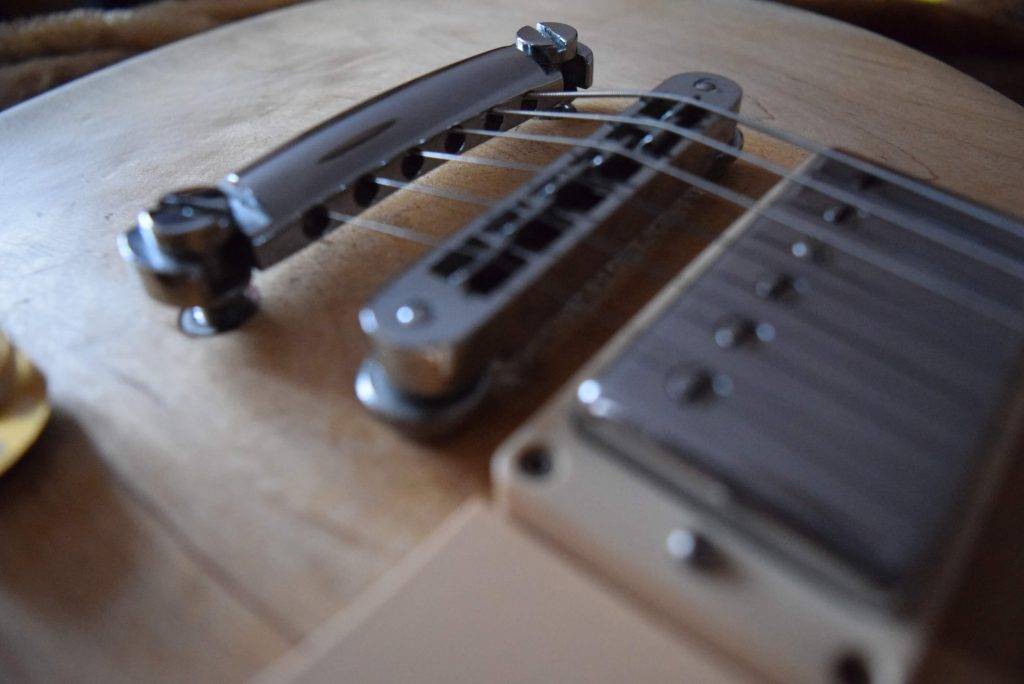
Is the Gibson Les Paul Studio simply a Les Paul Standard ‘Light’?
Absolutely not. It’s true, the Gibson Les Paul Studio’s body is a quarter of an inch thinner than the Standard, but that’s the one and only sound-impacting change. It has the same electronics, pickups (Gibson 490R + 498T), nitro-cellulose finish, and rounded 50’s mahogany neck profile with rosewood fingerboard, although the Gibson Les Paul Standard does have the option of the thinner 60’s neck profile. On the cosmetic side, the tops aren’t as nice (nothing near a Heritage Cherry Sunburst in the Studio line), and you don’t get a pearloid Gibson logo, but more importantly, the Studio does away with neck binding. This is actually an advantage, as Gibson was still binding over the ends of frets at the time, meaning strings could be easily caught on them during bends.
My 2003 Gibson Les Paul Studio was originally ebony with silver hardware, an ominously-cool modern-looking instrument, so I was happy to live without a burst. Lastly, it featured speedknobs, which was another upgrade over my old Les Paul Standard.

Legendary Les Paul playability?
Much has been said about how easy a Gibson Les Paul is to play, not least by the man “Les Paul” himself. I don’t completely agree with this as I’ve always found the longer scale length of the Fender Stratocaster gives my large fingers more room to maneuver, as well as being easier on the shoulder and comfier to hold (due to the bellow contour).
What the Gibson Les Paul Studio has in its favour are action and tension. My Studio had the lowest buzz-free action I’d ever achieved on any guitar, and with the shorter scale length (meaning less tension) and a set of .009’s, it’s almost too easy to play, so much so that you’ll want to go up a gauge to tap into the tonal (and tuning) benefits heavier strings bring.
Of course, the missing quarter inch of the Gibson Les Paul Studio brings its weight closer to that of a Strat anyway.
Going back to the Epiphone Les Paul Standard comparison, it came very close, but the finishing of the fretwork and fret-board, in general, was scruffier. I always looked forward to going back to Gibson with its slinkier setup and finer finishing.

The Sounds of the Gibson Les Paul Studio
Want to play Brother’s in Arms (Dire Straits) ? or Sweet Child O’ Mine (Guns n Roses)? You’re going to need a Gibson Les Paul on the neck pickup. Nothing else will get you that wide, flutey, syrupy thick, warm overdriven tone.
In my experience though, except for moments where you need that signature neck pickup ‘woman’ tone, about 95% of my time was spent on the Gibson 498T bridge pickup. The neck is too blurry for overdriven rhythm, while the bridge barges its way through anything. It’s been said, even in my own articles that the Fender Stratocaster cuts through like a knife with a finely judged EQ curve, while the Gibson Les Paul is more like a tank that relies on power.
I agree, and the reason I prefer to cut through with output is that I don’t want a lifeless, clean-ish signal cutting through, I want a sustaining, on-the-edge-of-feedback, singing guitar voice. I want to hang onto the notes and mold them into something unpredictable, not just have them die out on me. In fact, the 498T strikes just the right balance of crisp cutting highs, penetrating woody mids, and controlled but still deep bass. It’s an instantly recognisable and satisfying tone that’s easy to control with the minimum amount of fuss.
The Gibson 490R and 498T pickups were standard across the range at the time and even featured in the high-end customs and supremes of the day. Nowadays, of course, the lower output Burstbuckers have replaced them on many models. Nevertheless, I never saw the Burstbuckers as an upgrade, since the 490R and 498T have to be two of the most record pickups in history, and are still installed on some of the more desirable second-hand Gibson Les Pauls today.
The finer parts of the Gibson Les Paul Studio’s tone came into focus at the start of its life when the saddles were still sharp and my Epiphone Les Paul Standard was often brought into play. I’d upgraded the Epiphone to be a worthy backup (new switch and Seymour Duncan ’59 and JB neck and bridge pickups), but the Gibson Les Paul Studio always sounded wider, classier, clearer, cleaner, and more natural, compared to the blurrier, narrower sounding Epiphone.
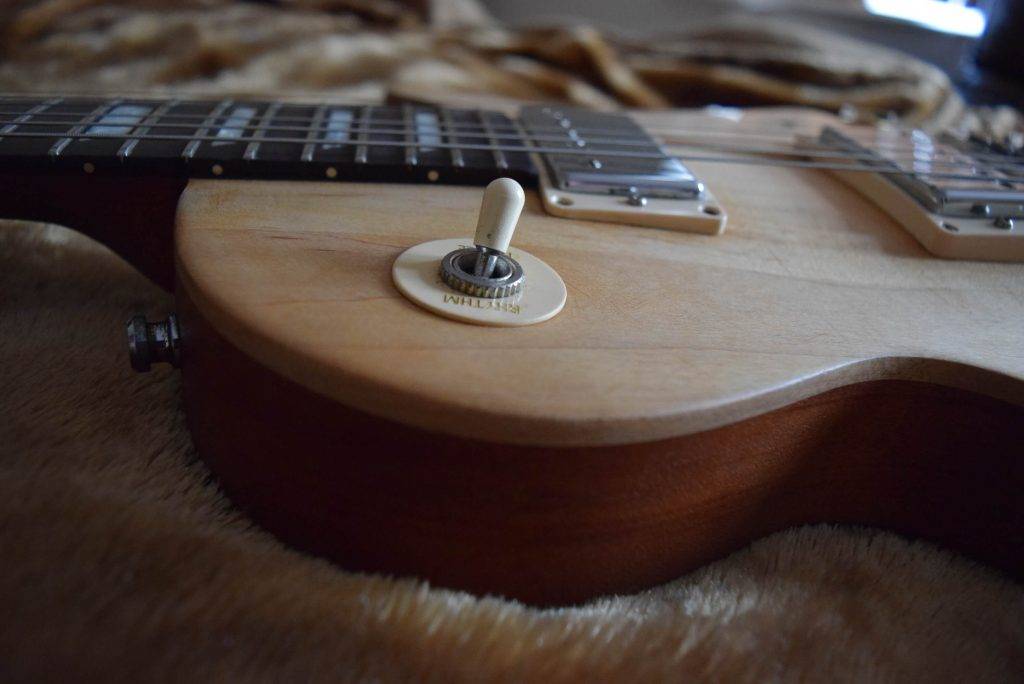
Is the Gibson Les Paul Studio more versatile than the Gibson Les Paul Standard?
The versatility of the Gibson Les Paul Studio reveals itself when backing off the guitar volume control or cleaning up your amp settings. Whereas the Gibson Les Paul Standard at the time was too lumpen and one-paced, the Studio seemed leaner, and able to move into cleaner territory with less resistance. It’ll still never compete with Fenders in this area, but for live gigs, you’ll never need a second guitar. The taper on the volumes and tone controls always operated intuitively and consistently, with no nasty surprises like sudden volume or gain drops and no crackling static. At full tone and volume, it’s less full-sounding than the Gibson Les Paul Standard, but this plays dividends as you start to back them off, creating a more usable lower-powered rhythm tone that maintains more of those crucial highs.
Is the Gibson Les Paul Studio a durable guitar?
The one-piece angled mahogany neck would suggest otherwise, but if properly looked after, it should last you a lifetime.
That’s the theory, but as I found out, the nitro-cellulose finish WILL start to disintegrate after 4 or 5 years, depending on use. I’ve seen 40 and 50-year-old instruments age really nicely, acquiring the fabled patina that everyone talks about. Unfortunately, moisture got under the nitro on mine, which blistered the finish resulting in an unsightly missing patch with the bare wood exposed.
The bottom line is that nitro-cellulose is NOT a durable finish.
The birth of my new customised natural wood Gibson Les Paul Studio.
The protective seal was breached. So partly with necessity and partly in panic I removed the strings and control knobs and broke out the sandpaper. I didn’t have time to dismantle the whole guitar as I had no backup by now, and a hectic rehearsal / gigging schedule, so I just did the best I could. Along the way, I somehow destroyed my bridge tone pot innards (probably the sawdust), so I disconnected it, giving the bridge pickup slightly more top end and output, which I loved!
The guitar was then sealed with 2 coats of Danish oil, which should have been 3 had time allowed. I also replaced the black switch and pickup surrounds for cream, and the black control knobs for amber.
I was amazed at the results, a beautiful natural wood Gibson Les Paul, with customised wiring, and the added benefit of a satin finish on the back of the neck, which made it much speedier than the sticky nitro beforehand.
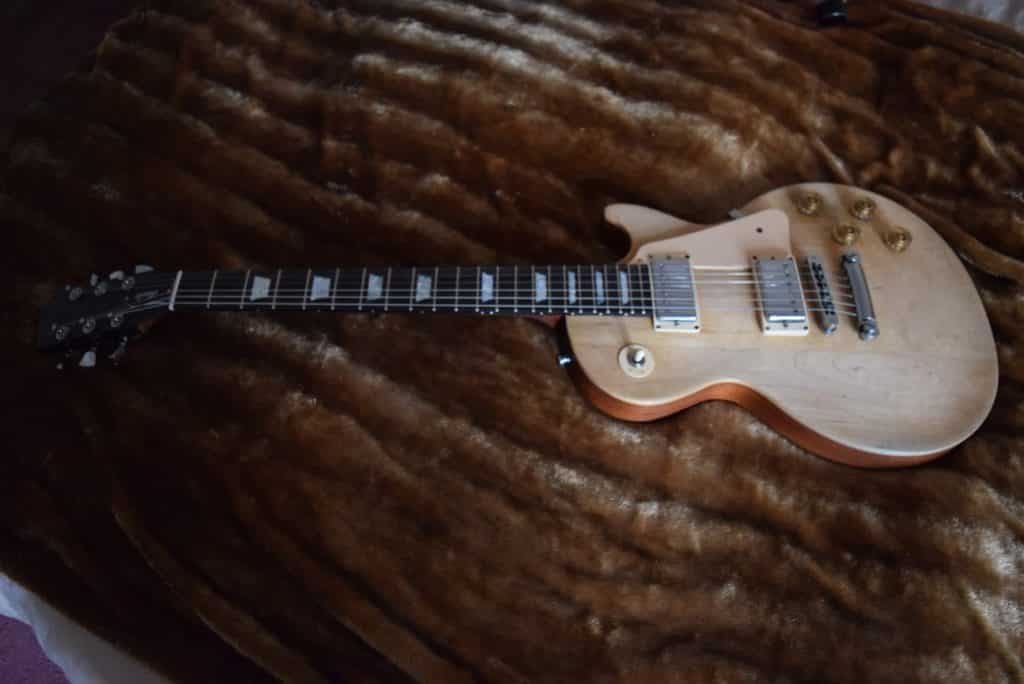
Gibson Les Paul Tuning Issues
Sadly, from that point on, the tuning on my Gibson Les Paul Studio always needed to be managed. Maybe I should’ve applied the extra coat of Danish oil, but without the Nitro seal, the guitar always felt more vulnerable to the elements. The wood had seemed to soften, perhaps due to moisture, and it drifted out of tune more readily. More than that, I always thought the nitro imparted its own character to the sound, for want of a better word a ‘finishing’ sheen holding everything together, which was now gone.
The nut seemed to need more and more attention too for some reason, maybe sawdust or some other foreign body had worked its way into the tiny grooves, or maybe it simply needed replacing. Either way, big bends were causing tuning issues no matter how hard I tried to clean the nut slots.

Time to Say Goodbye
I persevered, mainly because I still loved its look, it played itself and the changes I made gave it its own character. But as my Gibson Les Paul Studio reached its 10-year mark, the jack socket was rusting, one of the end-pin holes needed constant filling with matchsticks (an old trick), and the control knobs were almost falling apart. In fact, the whole guitar was falling apart!
Worse than that though, I really believed the wood was getting damp, muddying the sound further. Maybe that was just me, maybe it was the 10-year magnets of the Gibson 490R and 498T mellowing out.
In a gigging situation, you want to have minimal distractions, and that’s exactly what my Gibson Les Paul Studio had become, unfortunately.
Buying a new Gibson Les Paul Studio
Support the blog by purchasing via my Guitar Center affiliate link here or click the image below.

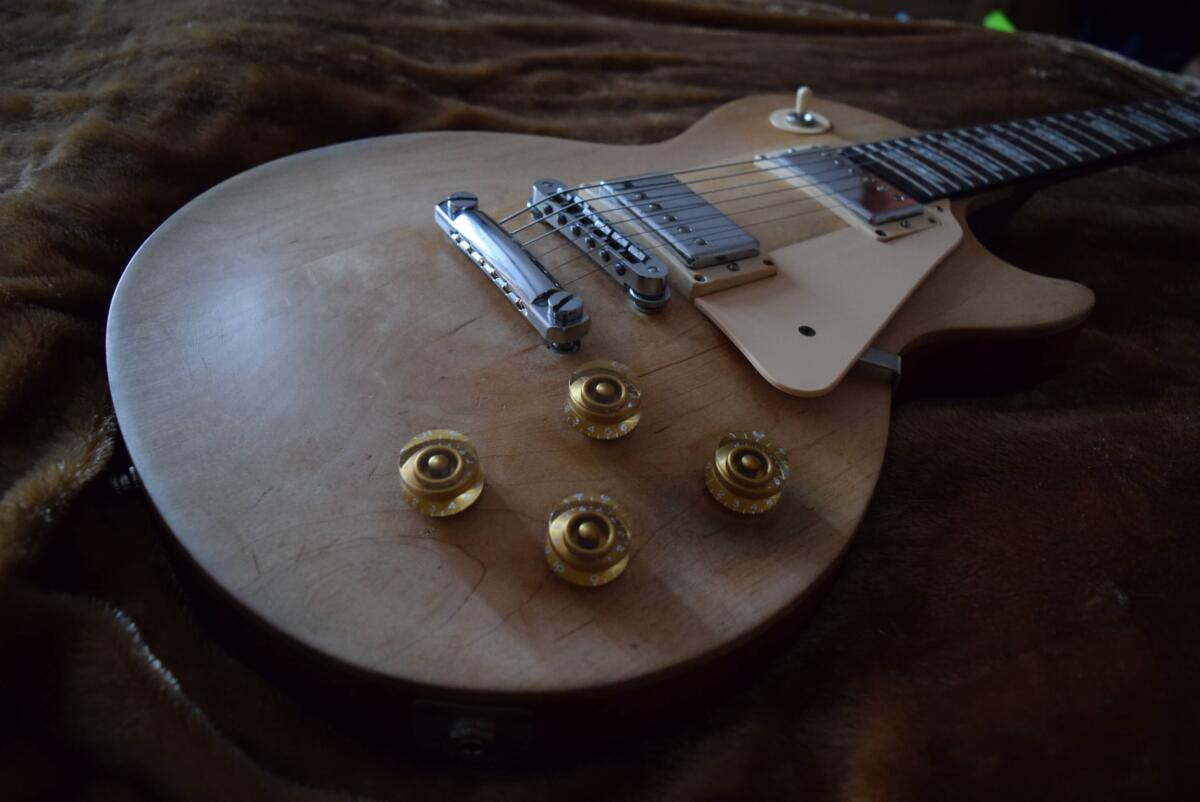

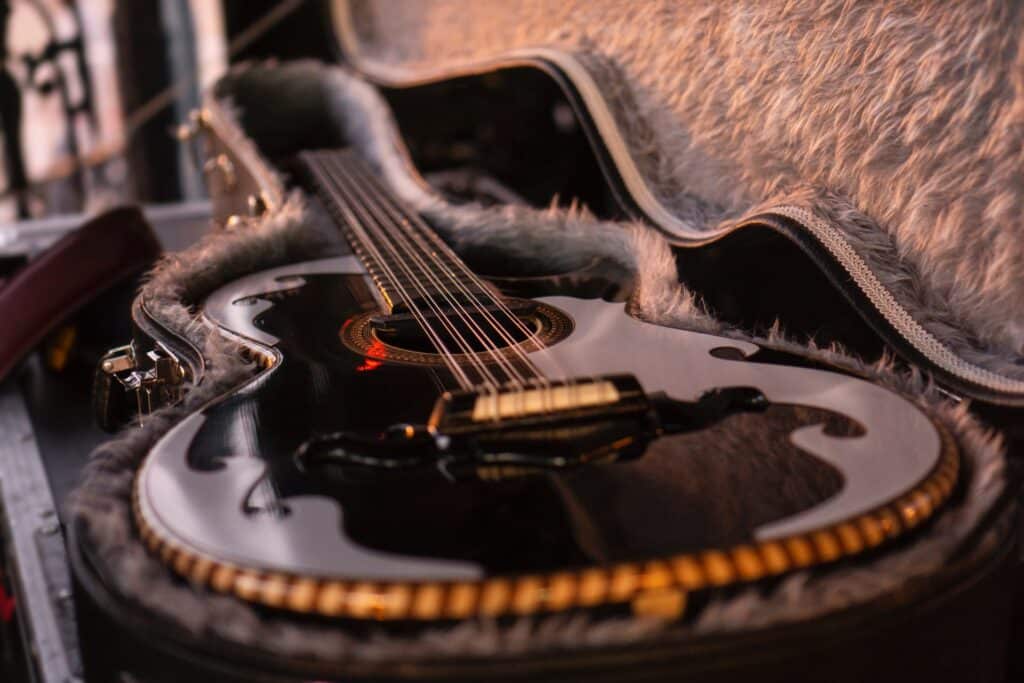
Great review! Also thank you for the follow and welcoming me to the community.
No problem at all. Welcome! and thanks for reading.
Excellent review! Thank you, Adam!
Thanks Paul!